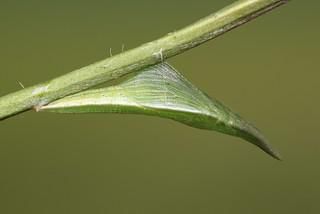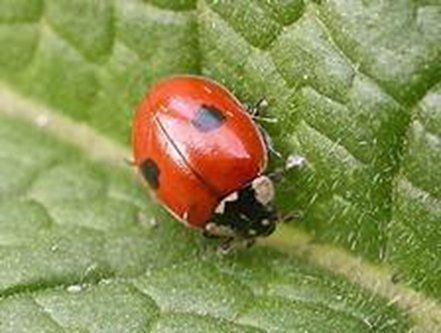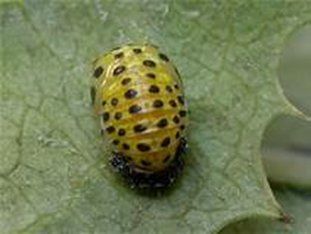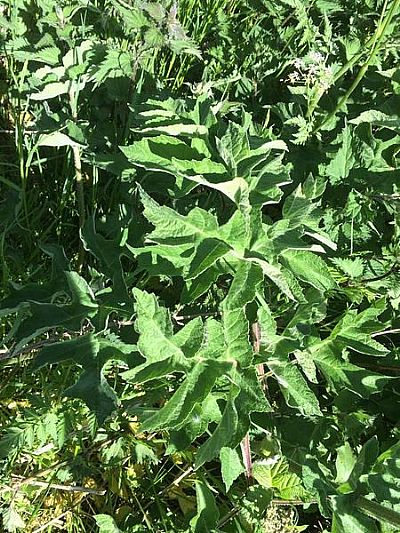Handy Guides & Articles
Looking to pick up some wildlife related tips? Check out one of our guides and articles below.
We've got a Bob
As mentioned in the previous article, when twitching gets a hold of you, it becomes addictive. As your list increases, there are fewer birds to go for, but when one does turn up you are more desperate to see it. More often than not, they turn up on far flung islands and you want to get there as quickly as possible. Even though most rarities eventually turn up on the mainland, patience is not in the twitchers armoury. You've got to see it now! Travelling long distances by car becomes tedious and tiring, and ferries are slow, so you need another option. The best by far is to hire a light aircraft. Fortunately, Sean Browne and a group of friends were lucky enough to find a pilot called Bob who was willing to travel anywhere at the drop of a hat, for a price.
Read the full article here to find out where they travelled and what they saw.
The Gyr Falcon
The Gyr Falcon is the worlds biggest falcon. With a wingspan as big as a Common Buzzard, it resembles a huge Peregrine. Our good friend Sean Browne has always wanted to get one on his 'list'. After several near misses over the last three decades and one case of mistaken identity did he finally get to see one? Read the full article here to find out!.
It's a Beauty - a Camberwell Beauty
The Camberwell Beauty is a stunning, large butterfly with chocolate brown upperwings, bordered by blue spots and a cream margin.
It has always been on Sean Browne's "must see" list and after missing out on four previous occasions, Sean and our very own Nigel Slater decided to try their luck on a scorching hot day in Norfolk.
You can read the full article here.

Photo kindly provided by Sean Browne
Inconspicuous Ladybirds
Our good friend Sean Browne has had a broad interest in insects for many years and after purchasing a field guide to Ladybirds, Sean and our own Nigel Slater were really keen to find some of the smaller members of the Coccinellidae family.
The results have been amazing including some first Notts records!
You can read the full article here.
French Bee Chafer (Trichius gallicus)
A stunning new beetle found for Notts (and most of the rest of the country) found by Sean Browne.
Read the story here and it just shows that anything can turn up anywhere!
Bird Song
Why do birds sing? Well, it's not because they are happy with the warmer weather. It's also not to give poets something to write about! Bird song is all about procreation - passing on genes.
View our handy guide to bird song here and get yourself out there and take it all in. The optimal bird song season is from the end of April until the beginning of June.
The Welsh Walrus
With the latest set of restrictions being lifted on Monday our friend Sean Browne decided to celebrate by heading off to Wales in search of a Walrus.
View the article here to see whether the trip was a success or whether he would have had more fun queuing outside Primark at dawn!
Blackbirds: Common bird, uncommon behaviour
Our friend Sean Browne shares his story of what the Blackbirds in his garden have been getting up to and why he had to move at the speed of Usain Bolt to help the Newts in his garden pond!
Guide to the Signs of Spring
As we get warmer days, flowers, insects and birds appear before us and reassure us that the shorter daylight hours are disappearing and we can look forward to longer walks in the open and the promise of more wildlife delights. Download our guide to see some examples to look for and enjoy.
Guide to Frogs and Toads
If you were wondering why Herons nest so early then it's due to the super-abundance of frogs and toads when their young are hatching. It's now mid-March, we'll be seeing ponds or any fresh water with clumps of Frogspawn. Download our guide to find out some facts about Britain's commonest amphibians.
Guide to Bumblebees and how you can help them
Bumblebees flying at the end of February and early March.
When we get warm spells at the end of winter, you will notice big bumblebees slowly flying around.
These are Queens that have woken up from hibernation and are looking for nectar from early flowering plants like Polyanthus, Daffodils and Aconites. When they have got their strength back, they will be looking for somewhere to make a nest.
There are several species of Bumblebee; most will be looking to build a nest underground.
You can help them by providing an artificial nesting site. There is no need to worry about bees near the house; they are gentle and harmless unless you actually squeeze them. Bees are declining for all sorts of reasons, if we can help them we should.
How to make an artificial bee nest
 Take a plant pot (about 6 inches across if possible), terracotta is best but plastic will do. Dig a hole in the ground big enough to sink ¾ of the pot (large end) below ground level. Fill the pot loosely with dried grass, moss or leaves and place in the ground. Put the earth back so the small drainage hole in the bottom of the pot stands proud of the ground. Its best to site the 'nest' in amongst plants - don't put it in an open space. You can put several around your garden, with luck one will be occupied by a Bumble bee. I had one nesting and I hardly noticed it was there, but they will be working hard pollinating flowers and most importantly fruit trees. They don't produce hundreds of workers like Honey bees and they are not aggressive if you go near the nest.
Take a plant pot (about 6 inches across if possible), terracotta is best but plastic will do. Dig a hole in the ground big enough to sink ¾ of the pot (large end) below ground level. Fill the pot loosely with dried grass, moss or leaves and place in the ground. Put the earth back so the small drainage hole in the bottom of the pot stands proud of the ground. Its best to site the 'nest' in amongst plants - don't put it in an open space. You can put several around your garden, with luck one will be occupied by a Bumble bee. I had one nesting and I hardly noticed it was there, but they will be working hard pollinating flowers and most importantly fruit trees. They don't produce hundreds of workers like Honey bees and they are not aggressive if you go near the nest.
Do your bit!
It's difficult to stress how important bees are. Every third mouthful of food you eat will have been pollinated by bees. Einstein said 'If we lose the bees, then we will follow'.
So, help save mankind and the planet - make a bee nest!
If you do get a bee to nest take a photo and send to us via email at info@beestonwildlifegroup.org so we can identify the species and tell you more.
Guide to birds that nest early in Spring
Spring is coming! Some birds are sat on eggs, even in February.
Some species of bird nest very early, they take the risk of raising young while the majority of bird species wait until it is warm and more food become available. As long as there is food and their feathers are in good condition, the birds can keep warm, they trap a layer of air next to their bodies; the feathers keep out the cold and wind. Feathers are superb insulators. When birds are sat on a nest and snow falls on them, it looks disastrous, but the fact that snow lays on the bird, shows that no heat is escaping to melt it, they are snug as toast!
Download the full guide as a PDF to find out more!
Guide to Bird Boxes
It's bird box time of the year - winter.
Winter is the best time to put up bird nesting boxes. It gives the birds time to find and explore them and a chance for them to naturalise. Birds will also roost in them.
Download the guide as a PDF and we will advise you when to put up, where to put up, do's and don'ts, what to look for in a good bird box, which bird in which box and where to buy!
Guide to Butterflies in Winter
In winter our thoughts don't normally turn to Butterflies, but every species that breeds in Britain are out there in the freezing weather, coping admirably as they have done for millennium.
Each species has a different strategy for surviving; they will be in the form of egg, caterpillar, chrysalis or the adult butterfly.
Adult Butterflies in winter
It is possible to see flying butterflies every day of the year as several species spend the winter in 'hibernation' as adults. If the temperature rises, as it can even in mid January, 'sleeping' butterflies may be stimulated to have a fly round and look for a nectar source. This is disastrous as there are very few. The butterfly will have taken on fuel in autumn to get it through the winter, so flying will reduce its stores. Warm winters are not good for over-wintering-adult butterflies. The bodies of the insects have anti-freeze on board and they all try to hide out of sight!
Red Admiral: These have recently survived mild winters in Britain, but any hint of frost will kill them. The first Red Admirals you see in spring will usually be migrants from the Continent. Overwintering adults in Britain are very late hatchers that wouldn't risk migrating south.
Small Tortoishell: These hide in out-houses or holes in trees. They do come into our homes, - if so, gently pick them up and place outside in a shed, otherwise they will die.
Peacock: These hide just as Small Tortoishell's, but often in groups indicating that they can communicate. If disturbed, they can hiss like a snake and may flash their open wings displaying their ‘eyes' to frighten a mouse or a bird disturbing them.
Comma: These don't use buildings but hide in woods and shrubbery low to the ground. Their wings looking like dead leaves.
Brimstone: Although bright yellow in colour, the wings are shaped like a leaf, they hide in evergreen shrubs like Ivy.
Over wintering as a chrysalis
Our three 'White' Butterflies: Large, Small and Green-veined, sit out the cold as chrysalises. In this stage they are vulnerable as they are relatively large and can't move, so they are camouflaged and hang on tree trunks or shrubs to merge into the back ground. The Orange Tip, spends 11 months as a chrysalis looking like a thorn or spur on a stem. 4/5 won't survive being eaten by predators.
The Speckled Wood, is unique in Britain, it is the only species that overwinters' as either a chrysalis OR a caterpillar, they are hidden in course grasses. There are two emergences to adults; in May and June respectively.
Over wintering as a caterpillar
The Common Blue spends the cold months as a tiny slug-like green caterpillar, hidden on the underneath of the leaves of Bird's-foot-trefoil. We could easily walk on them as we wander around, but enough of them survive to continue to wake up and eat the growing plant. These caterpillars spend 10 months as this form. Meadow Brown's lay their eggs on fine Meadow grasses, the minute green caterpillars munch the grass blades that contain certain fungi that act as bactericides. They may continue to eat on mild days in winter, but always out of sight near ground level. Gatekeeper caterpillars hide on the ground among dense dead leaves of coarse grasses, the brown caterpillars are impossible to find. The Small Skipper lays its eggs in the sheaths of Yorkshire Fog grasses, in rows of about six eggs above each other. The minute caterpillars eat the eggshells, then spin a cocoon around themselves, where they safely spend the winter still inside the grass sheath.
Over wintering as an egg
The Essex Skipper, is difficult to identify from the very similar Small Skipper in flight, but has a different overwinter stage. The flat shaped eggs with tough shells are squeezed between the sheath's of long grasses and laid in rows. The caterpillars fully hatch inside the eggs, but do not emerge until the spring. The Purple Hairstreak, lays its pinhead sized eggs at the base of Oak leaf buds. So, in winter the eggs are high in the trees not on the fallen leaves on the ground. In spring when the leaf buds start to open, the caterpillars hatch and burrow inside and are out of sight.
Migrating Butterflies
The Painted Lady is a true migrant arriving from Southern Europe in the spring. Their young produced in Britain fly south for the winter. Smaller numbers of other species migrate south in winter, just like the birds, for example Small Tortoishell, Large and Small Whites, but most remain as described above. Most Red Admirals will fly south when it gets cold. As winters get warmer we may expect to see other Mediterranean species expanding their range, it's evolution in action. Long-tailed Blue's already have a small foothold on the south coast; others might start to stay including Large Tortoishell, Camberwell Beauty or the Queen of Spain Fritillary.
So, as we turn up the central heating to keep ourselves snug in winter, outside wildlife continues to thrive no matter what the weather. As mere humans, we look forward to the spring when butterflies herald the time when we can get out and enjoy the outdoors, but, before then life miraculously continues out there in the cold.
Pictures: Butterflies in winter
1. Comma adult, leaf-like2. Brimstone adult, leaf-like
3. Peacock adult, black colour to hide in crevices
4. Large White chrysalis-cryptic colouration
5. Orange Tip chrysalis thorn-like
6. Essex Skipper eggs hidden in grass sheath (sheath opened to reveal the eggs)
7. Purple Hairstreak eggs (two small white discs) hidden at the base of oak leaf buds
8. Common Blue caterpillar cryptic green colouration
9. Meadow Brown caterpillar tiny and green to hide in grass stems
10. Gatekeeper caterpillar, tiny and brown to hide in leaf litter










Guide to Ladybirds
People like ladybirds, probably because they are brightly coloured and look interesting.
They are beetles with striking wing case covers (Elytra).
There are 47 species in Britain. You can’t ‘age’ or determine the species by counting the spots! They vary, even between species. Twenty seven species are brightly coloured, twenty are dull brown. There are common ones that you can identify with a bit of practice and they can be seen all year round, although in the winter months they go into a torpid state and hide, but will wake up and feed if it warms up.
They are like butterflies in that they have a four stage life cycle: Egg, caterpillar, chrysalis and adult beetle.
Many eat aphids as the caterpillar and adult stages, so are welcomed in the garden. In fact when a plant is being attacked by aphids, the plant sends out a chemical signal that attracts ladybirds to come and ‘help’.
Below are seven common species, when you next come across a ladybird, why not try and identify it?
7 Spot: The commonest ladybird. Three spots on each wing and one in the middle:

Harlequin: A big ladybird with many different forms. All have pale brown legs. (7 Spot has black):



2 Spot: A small ladybird, one spot on each wing, there are different forms, but always small:

22 Spot: A yellow ladybird with round black spots, eats mildew on leaf surfaces (Compare to 14 Spot):

14 Spot: Has a Clowns smiley face, with square spots. (Compare to the 22 Spot):

16 Spot: A ladybird that has a line of spots joined around the rim, and a black line down the middle:

24 Spot: A dull red, hairy ladybird with many spots, a red head (other species black), eats vegetation:

Egg:

Caterpillar:



Chrysalis:



If you come across a ladybird or any insect you would like identifying, take a photo on your phone and send it to us. We love a challenge!
Creating your own Wildlife Pond
On our Projects page you will see we've undertaken several community projects to create wildlife ponds. If you are considering the very worthwhile and rewarding exercise of creating your own pond, our guide will certainly help you.
Identifying White Butterflies
In Britain we have three species of (common) white butterflies:
Large White, Small White, Green-veined White - there is NO such species as CABBAGE WHITE!
All three species can be seen flying together and can be seen until about the first week in October. It is very easy to tell them apart if you know what to look for.

Large White: Like its name suggests, Large White is bigger than the other two species, but unless they are nearby for comparison, that can cause confusion. Look for the black mark on the corner of the wing - it continues to half way down the wing. In the other two species the corner mark(s) are much smaller.
Small white: Small White is the same size as Green-veined White, about 2/3 the size of Large White. Small White only has a small grey mark in the corner of the wing; it never goes as far as half way down, like in Large White. It only has one mark in the corner, unlike the Green-veined White, which has several marks.
Green-veined White: The same size as Small White, this species has several grey marks in the corner of the wing that look like dark triangles. This species also has dark veins (not green – it should be called Dark-veined White!). Small White has a white background colour; Green-veined often looks dirty-white due to the dark veins.
That is it – simple!
There are differences in the number of spots on the upper wings; you can use these to sex the butterflies. In Large White one or no spots on each wing is a male, Two spots, female. In Small and Green-veined White: One spot = Male, Two spots = Female.
The best way to learn these is to get out and have a look.
And remember - THERE IS NO SUCH BUTTERFLY AS CABBAGE WHITE!!
Plants with umbellifer flowers
Here are three to get you started. Don't be tempted to taste any - they can be fatal! Easy to identify when you know what to look for - lots in flower now along river, roads and paths. Why not a have a go at identifying them yourself on your next walk?
Cow Parsley: white frothy flowers, often in swathes, smooth stems, leaves fern-like but dull.



Hogweed: creamy dull white flowers on upturned umbrella like stems, leaves deeply loved, stems firm and hairy and rubbed. Plants are individually spaced - not in big swathes.



Hemlock: White flowers spaced out on weak upturned umbrella, stems smooth green with maroon spots, leaves fern-like but deep green with a shiny appearance.



Hemlock (left) with Hogweed (right).

Amaze and bore your friends with your knowledge of bird song
It's not easy though. It's best to concentrate on the abundant sounds and learn to 'switch your hearing on' and learn what is on your doorstep. Great birdwatchers are permanently switched on. When you are tuned in, you can hear what is about without leaving your house!
WOOD PIGEON has FIVE syllables. They say 'I think I love you' or 'My toe hurts betty'. Listen to a Wood Pigeon.

COLLARD DOVE has THREE syllables they say 'United' continually or 'I love you' repeatedly. Listen to a Collared Dove.

Go on give it a go. When these are in your memory banks, you can move on to more species. When you can name everything that is calling around you, that’s when you progress to Attenborough!!
Following on from our last post on the differences in the songs of a Wood Pigeon and Collared Dove, here are three more very common species that are easy to recognise. Listen many times to all songs to pick out the differences. It is like learning a song on the radio - eventually it becomes embedded and the differences are obvious. There is no substitute for hearing them out in the field - but all of these can be heard from your house if you have, or are near, gardens. Then when you've learnt these, the next time you go for a walk in the woods you'll be able to 'tune them out' so you can concentrate on the songs of other birds that are less familiar.
ROBIN: Sings all year round, night and day! A wistful, clear 'sad' tone, singing for long periods with changes of tempo. Listen to a Robin.

DUNNOCK: Fast, high pitched squeaky short bursts lasting 2-3 seconds, repeating several times. No variation. Listen to a Dunnock.

WREN: An excited, rattling vibrant warble ending with a trill. A very loud song for such a small bird. Song longer than Dunnock that has a similar tone. Listen to a Wren.

BLACKBIRD: Slow, lazy, flutey mellow song, the second phase often having a chuckling quality. One of the most common and recognisable bird songs of the Spring. Listen to a Blackbird.

SONG THRUSH: Similar tone to Blackbird but less rich, and always repeating phrases 3 to 5 times, pausing then repeating a new phrase. Although it's easily recognisable without, the repetition is the key to identification. Listen to a Song Thrush.

Picture Credits:
Robin By © Francis C. Franklin / CC-BY-SA-3.0, CC BY-SA 3.0, https://commons.wikimedia.org/w/index.php?curid=31367900
Wren By © Andy Witchger https://macaulaylibrary.org
Dunnock By Smalljim - Own work, CC BY 3.0, https://commons.wikimedia.org/w/index.php?curid=3828054
Blackbird: Stuutje1979 From Wikimedia Commons, the free media repository
Song Thrush: John Harrison
